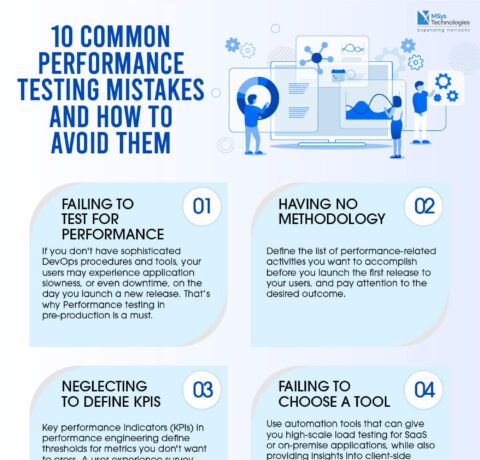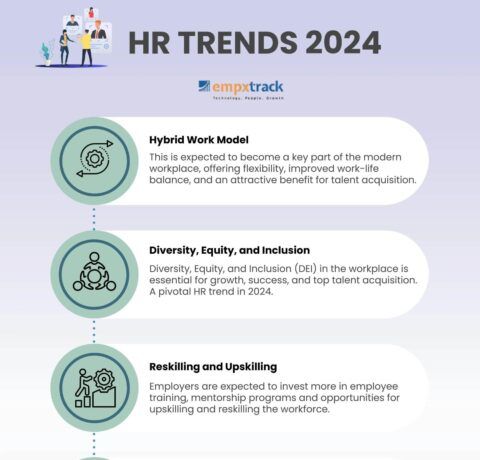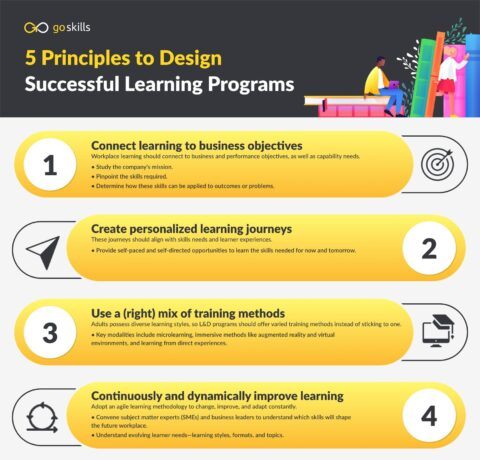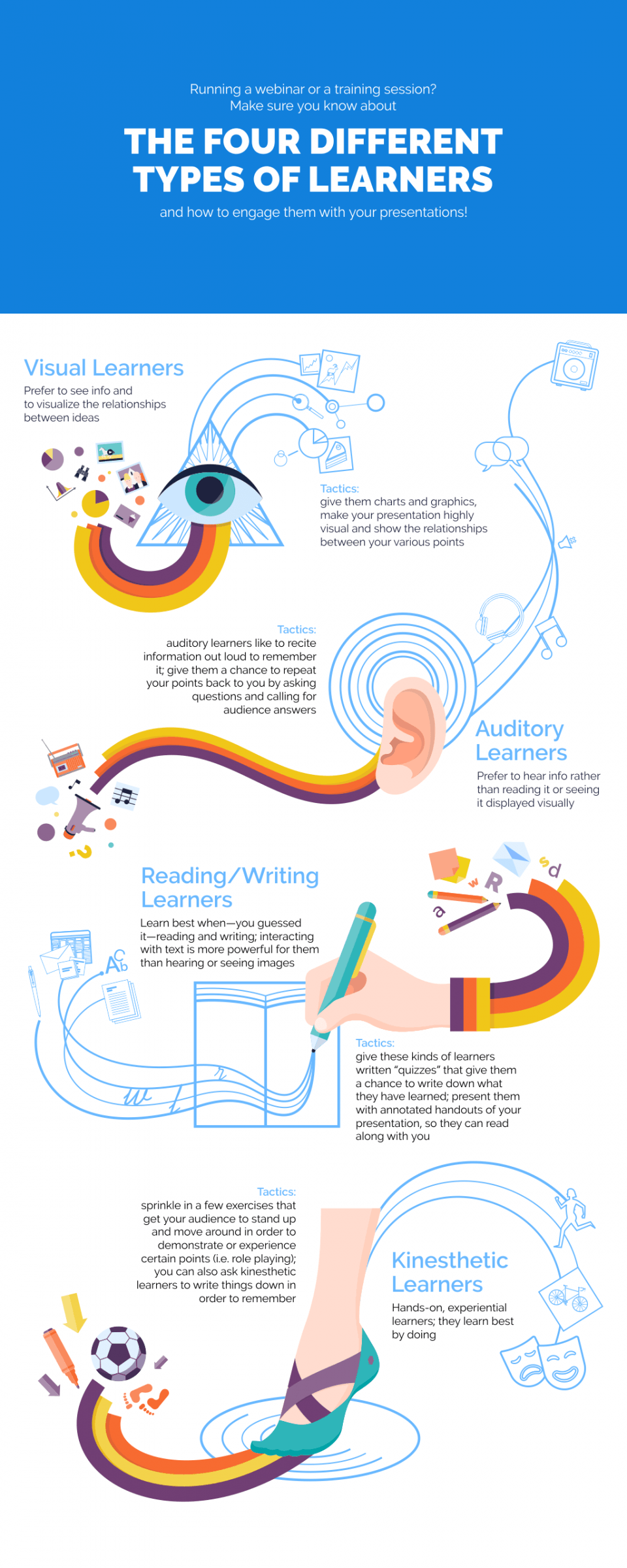Presenting Content to Different Types of Learners Infographic
Remember when you were in school and you had to cram hundreds of pages of textbook material into your head before every big test? If you were like most students, you and your friends probably developed all kinds of tactics to make the grade. Maybe you made flashcards, or reviewed recordings of your professors’ lectures, or came up with intricate mnemonic devices to memorize the material at hand. You may have argued with your classmates about which method was best—but the truth is that, when it comes to learning, one size does not fit all.
Scientists and psychologists have developed a number of different models to understand the different ways that people learn best. One popular theory, the VARK model, identifies four primary types of learners: visual, auditory, reading/writing, and kinesthetic. Each learning type responds best to a different method of teaching. Auditory learners will remember information best after reciting it back to the presenter, while kinesthetic learners will jump at the chance to participate in a hands-on activity.
Every presenter that stands up in front of an audience wants to be understood. But when your audience is equipped to learn best in distinctly different ways, how do you make sure that you get your message across to everyone in the room? The consequences of these learning styles reach far beyond the classroom. If you want to educate a large group of people, no matter what the setting, you need to know how to engage each of the four learning styles.
Luckily, there are a few simple things you can do as a presenter to make sure you’re catering to every kind of learner in your audience, whether you’re speaking to hundreds of webinar attendees or 30 coworkers in a small training session. Take a look at the Presenting Content to Different Types of Learners Infographic to learn more about the VARK model’s four primary learning styles and what you can do to engage all of them in your next presentation.







You can adjust your cookie preferences here.